SomethingElse
Press escape to continue.
- Joined
- Mar 22, 2007
- Messages
- 5,442
- Reaction score
- 0
Kuba Cloth: Playing with Geometry - Kuba cloth, the magnificent embroidered and applique fabric of the Kuba people, is the best-known example of the ancient African tradition of raffia cloth weaving.
A Trend-Setting Art Form
Weaving, embroidery, appliqué; and other textile techniques have long been staples of African artistry. In the past, European nobility displayed raffia cloth in curio cabinets as prime examples of African artistry. More recently, the masterful abstract patterning displayed in Kuba cloth served as a source of inspiration to artists such as Klee, Picasso, and Braque. Matisse was such a fan that he displayed pieces of his extensive Kuba cloth collection on the walls of his studio.
Symbols in the After-Life
The ceremonial occasions and court rituals that embroidered raffia cloth were originally produced for are rare events today.The survival of raffia weaving and embroidery techniques is tied to the importance these cloths play in today's funeral celebrations. The Kuba believe that high quality, correctly patterned raffia dress is key to being recognized by clan ancestors in the land of the dead, so families accumulate the cloths and pass them down through the generations.
Creating Kuba Cloth
The basic unit of Kuba weaving is the undecorated square of plain raffia cloth, the mbal, woven by men on an upright single-heddle loom. Although men sometimes decorate the cloth they weave, only women produce the most laborious and prestigious type of cloth decoration, cut-pile embroidery.
It takes about a month of regular work for a woman to complete a small square of kuba embroidery using a laborious technique that includes dying, detailed needlework and clipping individual tufts. Except for novices, designs are created as the crafter proceeds, usually elaborating a new combination from the more than 200 familiar patterns known designs, most which are identified by name. The same patterns are used on other Kuba art forms, including wood sculpture, metalworking, mat making, and women's body scarification.
Although the regular interlacing on the background cloth promotes a regular and symmetrical design, Kuba artists favor an improvisational, fluid effect that plays with deliberate asymmetries and pattern variation, creating the exquisite workmanship that distinguishes this native art form.
Below: Ensemble, late 19th century, African (Kuba peoples). Raffia fiber, harvested from the palm leaf, is used in almost all Kuba textiles and is a powerful emblem of security and continuity, symbolizing the bond of the living to each other as well as to the deceased. The intricately pieced checkerboard pattern and large size of this skirt reveal the prominent social status of the wearer.


africanconservancy.org . metmuseum.org












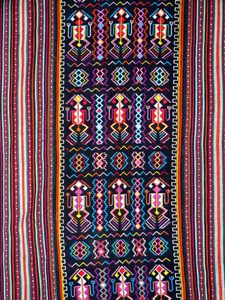
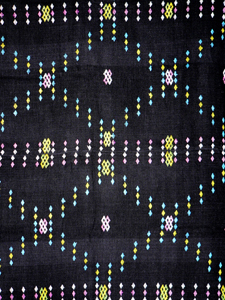
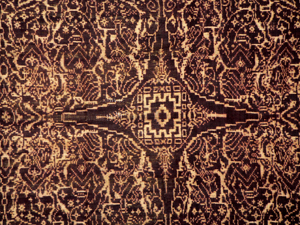
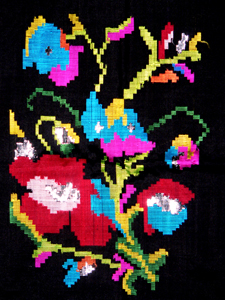
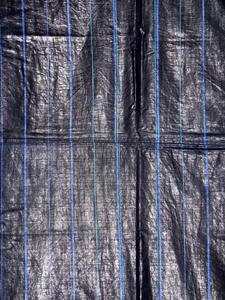

 . and thx too for your comment on my blog
. and thx too for your comment on my blog  They also use indigo and it's shiny. I handled it once --it feels like paper
They also use indigo and it's shiny. I handled it once --it feels like paper
